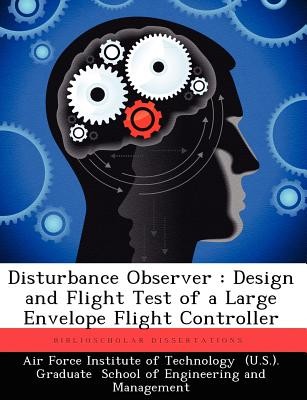
- We will send in 10–14 business days.
- Author: Donevan A Rein
- Publisher: BiblioScholar
- ISBN-10: 1249411947
- ISBN-13: 9781249411949
- Format: 18.9 x 24.6 x 0.7 cm, softcover
- Language: English
- SAVE -10% with code: EXTRA
Reviews
Description
A new flight controller was evaluated through piloted simulation and flight test conducted at the USAF Test Pilot School. The controller, commonly called a disturbance observer, uses inertial sensor feedback routed through a simple control architecture that acts to force the desired response while rejecting sensor noise and atmospheric disturbances. The investigation included both handling qualities testing in the Octonian simulator at the Air Force Research Laboratories Air Vehicle Directorate, and initial flight test conducted as part of a Test Management Project at the USAF TPS. Simulation produced positive results with desired performance throughout a wide flight envelope. In addition, the desired response of the aircraft was easily modified by changing variables within the controller. Flight test was conducted on the Variable-stability In-flight Simulator and Test Aircraft (VISTA). Twelve test sorties totaling 16.4 flight hours were conducted and culminated in multiple landings at Edwards AFB, CA. Time delay inherent in the VISTA resulted in the requirement to gain down the control surface command signal. Sensor noise was amplified and caused a control surface 'buzz." Flying qualities exhibited lower damping and frequency than 'desired' yet were consistent throughout a larger flight envelope. Post flight analysis resulted in the determination of ways to reduce the noise causing the 'buzz' and improve the flying qualities by adjusting the controller's 'desired dynamics.'
EXTRA 10 % discount with code: EXTRA
The promotion ends in 16d.12:01:46
The discount code is valid when purchasing from 10 €. Discounts do not stack.
- Author: Donevan A Rein
- Publisher: BiblioScholar
- ISBN-10: 1249411947
- ISBN-13: 9781249411949
- Format: 18.9 x 24.6 x 0.7 cm, softcover
- Language: English English
A new flight controller was evaluated through piloted simulation and flight test conducted at the USAF Test Pilot School. The controller, commonly called a disturbance observer, uses inertial sensor feedback routed through a simple control architecture that acts to force the desired response while rejecting sensor noise and atmospheric disturbances. The investigation included both handling qualities testing in the Octonian simulator at the Air Force Research Laboratories Air Vehicle Directorate, and initial flight test conducted as part of a Test Management Project at the USAF TPS. Simulation produced positive results with desired performance throughout a wide flight envelope. In addition, the desired response of the aircraft was easily modified by changing variables within the controller. Flight test was conducted on the Variable-stability In-flight Simulator and Test Aircraft (VISTA). Twelve test sorties totaling 16.4 flight hours were conducted and culminated in multiple landings at Edwards AFB, CA. Time delay inherent in the VISTA resulted in the requirement to gain down the control surface command signal. Sensor noise was amplified and caused a control surface 'buzz." Flying qualities exhibited lower damping and frequency than 'desired' yet were consistent throughout a larger flight envelope. Post flight analysis resulted in the determination of ways to reduce the noise causing the 'buzz' and improve the flying qualities by adjusting the controller's 'desired dynamics.'


Reviews